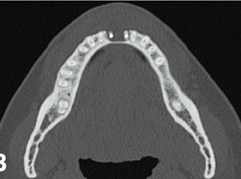Are dental implants the first option in case of severely compromised teeth associated with radicular cyst? A critical case report

Published: 24 April 2020
Abstract Views: 763
pdf: 360
Publisher's note
All claims expressed in this article are solely those of the authors and do not necessarily represent those of their affiliated organizations, or those of the publisher, the editors and the reviewers. Any product that may be evaluated in this article or claim that may be made by its manufacturer is not guaranteed or endorsed by the publisher.
All claims expressed in this article are solely those of the authors and do not necessarily represent those of their affiliated organizations, or those of the publisher, the editors and the reviewers. Any product that may be evaluated in this article or claim that may be made by its manufacturer is not guaranteed or endorsed by the publisher.
Similar Articles
- D. Dudek, E. Reichmann-Warmusz, G. M. Kurtzman, L. Mahesh, The use of grafting material biphasic calcium sulfate for the treatment of osseous defects resulting from radicular cysts. Clinical study and six-month follow up , Journal of Osseointegration: Vol. 12 No. 4 (2020)
You may also start an advanced similarity search for this article.


 https://doi.org/10.23805/JO.2020.12.02.16
https://doi.org/10.23805/JO.2020.12.02.16







